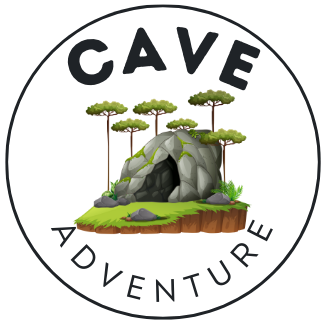Introduction
Nestled in the heart of Kentucky, Mammoth Cave stands as a testament to the raw power and beauty of nature. As the world’s longest known cave system, it has captivated explorers, scientists, and tourists for centuries. This comprehensive guide will take you on a journey through the vast underground labyrinth, exploring its geological wonders, rich history, diverse ecology, and cultural significance.
Geological Features and Cave Systems
Mammoth Cave is a marvel of geological processes, shaped over millions of years by the relentless force of water eroding limestone. The cave system boasts an impressive array of geological features that leave visitors in awe:
- Vast Chambers: Some of the largest underground rooms in the world, such as the Rotunda and Grand Avenue.
- Intricate Passageways: Miles upon miles of winding corridors connecting various parts of the cave system.
- Stunning Formations: Stalactites, stalagmites, flowstones, and gypsum flowers adorn the cave walls and ceilings.
- Underground Rivers: The Echo River and other subterranean waterways continue to shape the cave.
The cave systems of Mammoth Cave are incredibly complex, with over 400 miles of surveyed passageways. Ongoing exploration continues to reveal new chambers and connections, making it an ever-evolving natural wonder.
Ecology and Biodiversity
Despite the seemingly harsh underground environment, Mammoth Cave is home to a surprisingly diverse ecosystem. The cave supports a variety of unique and specialized organisms adapted to life in perpetual darkness:
- Troglobites: Species that live exclusively in caves, such as the eyeless cave fish and cave crayfish.
- Troglophiles: Animals that can live both inside and outside caves, including certain bat species.
- Trogloxenes: Organisms that use caves for shelter but must leave to find food, like the cave cricket.
The surface ecosystem above the cave is equally important, featuring a mix of hardwood forests, rivers, and diverse wildlife. This intricate balance between surface and subsurface environments makes Mammoth Cave a crucial area for scientific research and conservation efforts.
Human History and Cultural Significance
The human history of Mammoth Cave spans thousands of years, from ancient Native American explorers to modern-day tourists. The cultural significance of Mammoth Cave is deeply rooted in the region’s heritage:
- Native American Presence: Evidence of indigenous exploration dates back over 4,000 years.
- Early European Exploration: The cave was ‘discovered’ by European settlers in the late 18th century.
- Saltpeter Mining: During the War of 1812, the cave was mined for saltpeter to produce gunpowder.
- Tourism Beginnings: Guided tours of the cave began as early as 1816.
The human history of Mammoth Cave is filled with fascinating stories of exploration, exploitation, and preservation. From the enslaved guides who first led tourists through the dark passages to the establishment of Mammoth Cave National Park in 1941, the cave has played a significant role in shaping the region’s identity.
Tourism and Visitor Experience
Today, Mammoth Cave is a popular tourist destination, attracting hundreds of thousands of visitors each year. The tourism at Mammoth Cave offers a range of experiences for all ages and abilities:
- Guided Tours: From easy walks to challenging crawls, there’s a tour for every level of adventurer.
- Educational Programs: Rangers and guides offer informative talks and demonstrations on cave geology, ecology, and history.
- Surface Activities: Hiking trails, camping, and canoeing opportunities in the surrounding national park.
- Visitor Center: Interactive exhibits and multimedia presentations provide context for the cave experience.
Visitors should be aware of safety regulations and guidelines to ensure a safe and enjoyable experience. These include staying on designated paths, not touching cave formations, and following ranger instructions at all times.
Conservation and Environmental Challenges
Preserving Mammoth Cave for future generations is an ongoing challenge. Conservation efforts at Mammoth Cave focus on several key areas:
- Water Quality: Protecting the cave’s underground waterways from pollution and contamination.
- Bat Population Management: Monitoring and protecting bat species, especially in light of threats like White-Nose Syndrome.
- Cave Formation Preservation: Implementing strict rules to prevent damage to delicate cave formations.
- Surface Land Management: Maintaining the ecological balance of the forest and river systems above the cave.
Climate change poses new challenges for cave conservation. The climate of Mammoth Cave is intricately linked to surface conditions, and changes in temperature and precipitation patterns could have significant impacts on the cave environment.
Research and Education
Mammoth Cave serves as a living laboratory for scientists from various disciplines. Research and education programs at the cave focus on:
- Geology: Studying cave formation processes and karst landscapes.
- Biology: Investigating cave ecosystems and unique adaptations of cave-dwelling organisms.
- Hydrology: Examining underground water systems and their connection to surface watersheds.
- Archaeology: Uncovering evidence of ancient human activity in the cave.
Educational outreach programs aim to inspire the next generation of cave explorers, scientists, and conservationists. From school field trips to citizen science projects, Mammoth Cave offers numerous opportunities for hands-on learning.
Conclusion
Mammoth Cave is more than just a vast underground cavern; it’s a complex ecosystem, a treasure trove of geological and historical information, and a testament to the enduring human spirit of exploration. As we continue to unravel its mysteries, the importance of preserving this natural wonder becomes ever more apparent.
Whether you’re a seasoned caver, a curious tourist, or an armchair explorer, Mammoth Cave offers something for everyone. Its vast chambers and winding passages continue to inspire awe and wonder, reminding us of the incredible forces that shape our planet and the delicate balance of life that thrives even in the darkest corners of the Earth.
As stewards of this remarkable place, it’s our responsibility to ensure that Mammoth Cave remains protected, studied, and accessible for generations to come. By understanding its significance and supporting conservation efforts, we can help preserve this underground marvel for the future, allowing it to continue revealing its secrets and inspiring wonder in all who venture into its depths.
